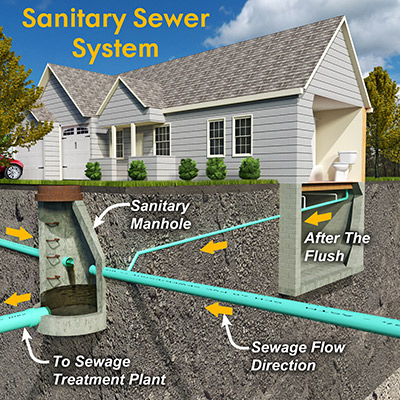
Inspect and Pump Frequently
The average household septic system should be inspected at least every three years by a septic service professional. Household septic tanks are typically pumped every three to five years. Alternative systems with electrical float switches, pumps, or mechanical components should be inspected more often, generally once a year. A service contract is important since alternative systems have mechanized parts.
Four major factors influence the frequency of septic pumping:
Household size
Total wastewater generated
Volume of solids in wastewater
Septic tank size
Do you have a service provider coming? Here is what you need to know.
When you call a septic service provider, they will inspect for leaks and examine the scum and sludge layers in your septic tank.
Keep maintenance records on work performed on your septic system.
Your septic tank includes a T-shaped outlet which prevents sludge and scum from leaving the tank and traveling to the drainfield area. If the bottom of the scum layer is within six inches of the bottom of the outlet, or if the top of the sludge layer is within 12 inches of the outlet, your tank needs to be pumped.
To keep track of when to pump out your tank, write down the sludge and scum levels found by the septic professional.
The service provider should note repairs completed and the tank condition in your system’s service report. If other repairs are recommended, hire a repair person soon.
Maintain Your Drainfield
Your drainfield—a component of your septic system that removes contaminants from the liquid that emerges from your septic tank—is an important part of your septic system. Here are a few things you should do to maintain it:
Parking: Never park or drive on your drainfield.
Planting: Plant trees the appropriate distance from your drainfield to keep roots from growing into your septic system. A septic service professional can advise you of the proper distance, depending on your septic tank and landscape.
Placing: Keep roof drains, sump pumps, and other rainwater drainage systems away from your drainfield area. Excess water slows down or stops the wastewater treatment process.
For more information on septic system inspections, contact Morse Engineering and Construction.
